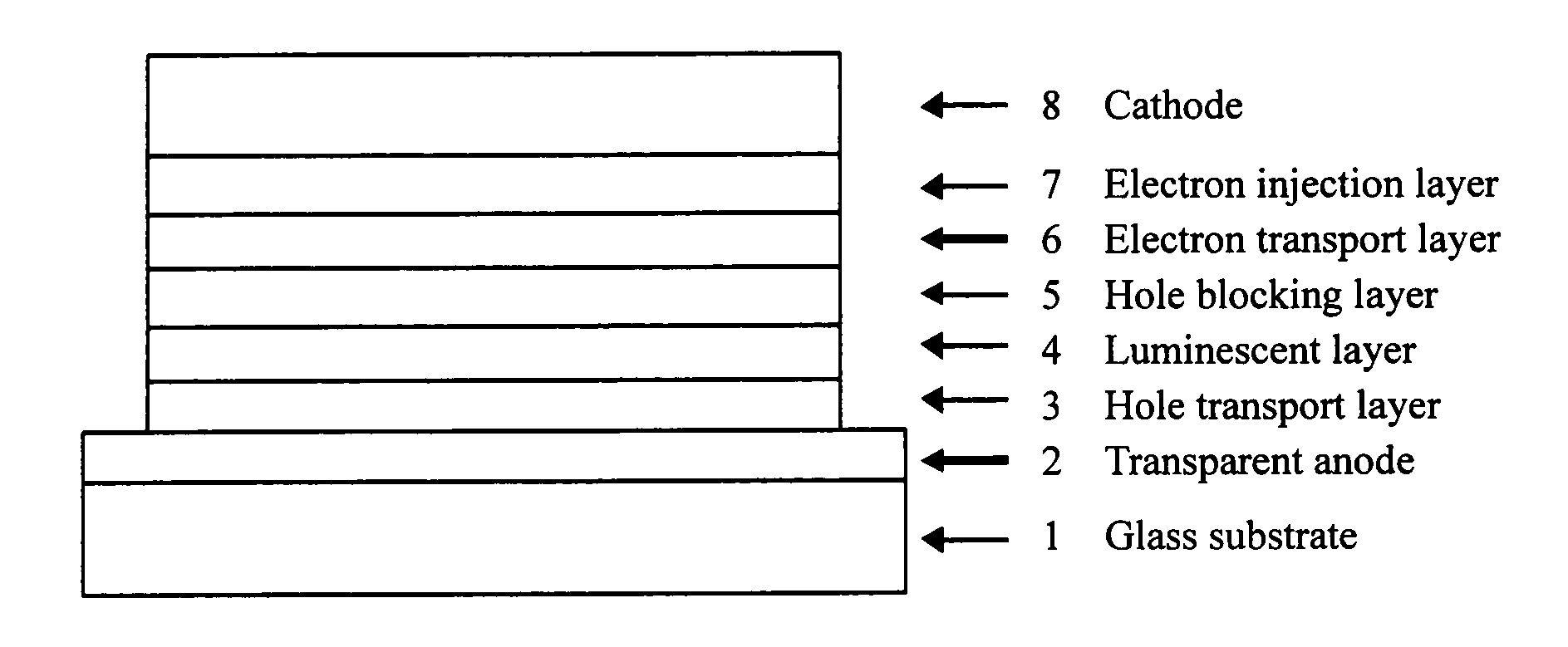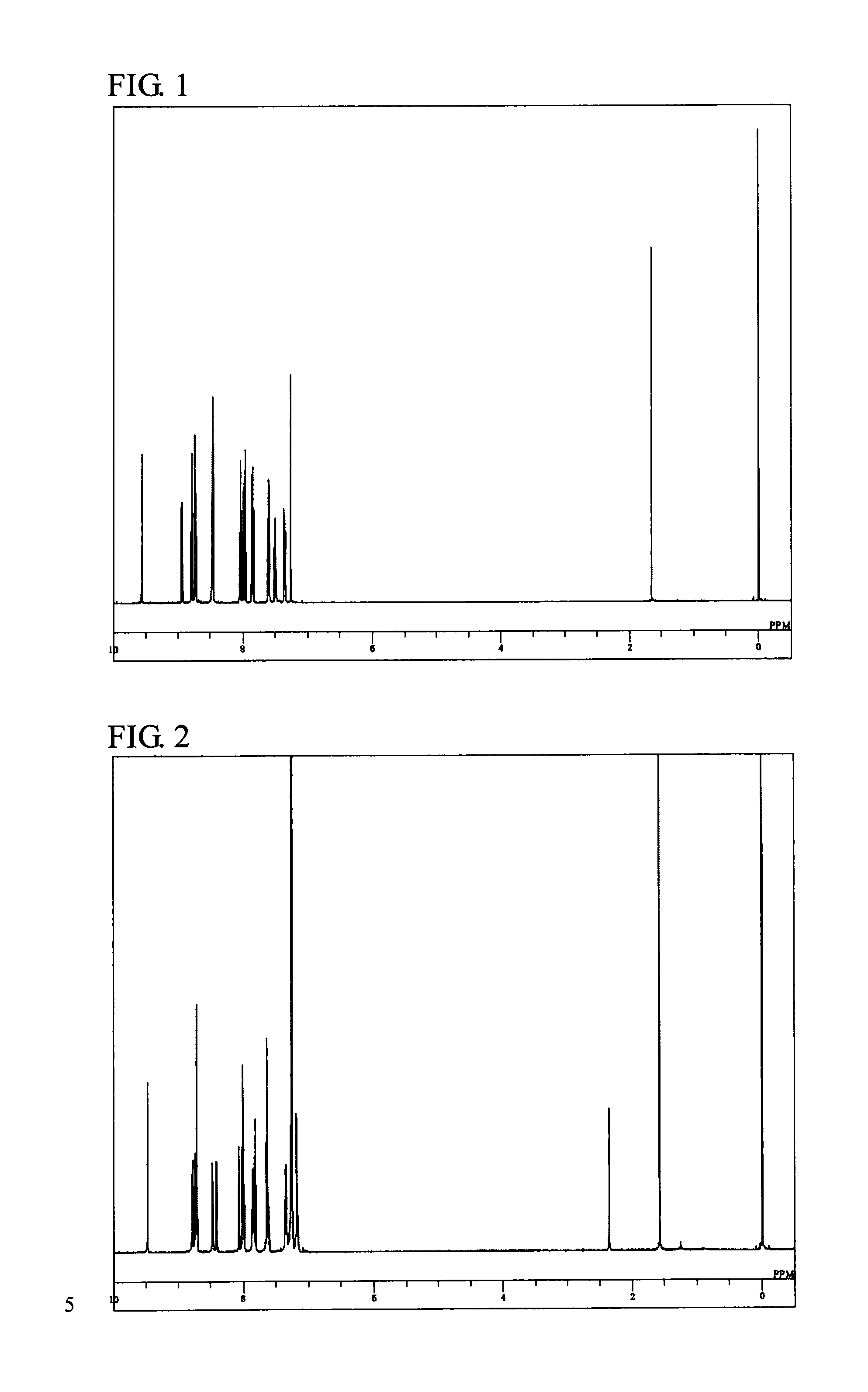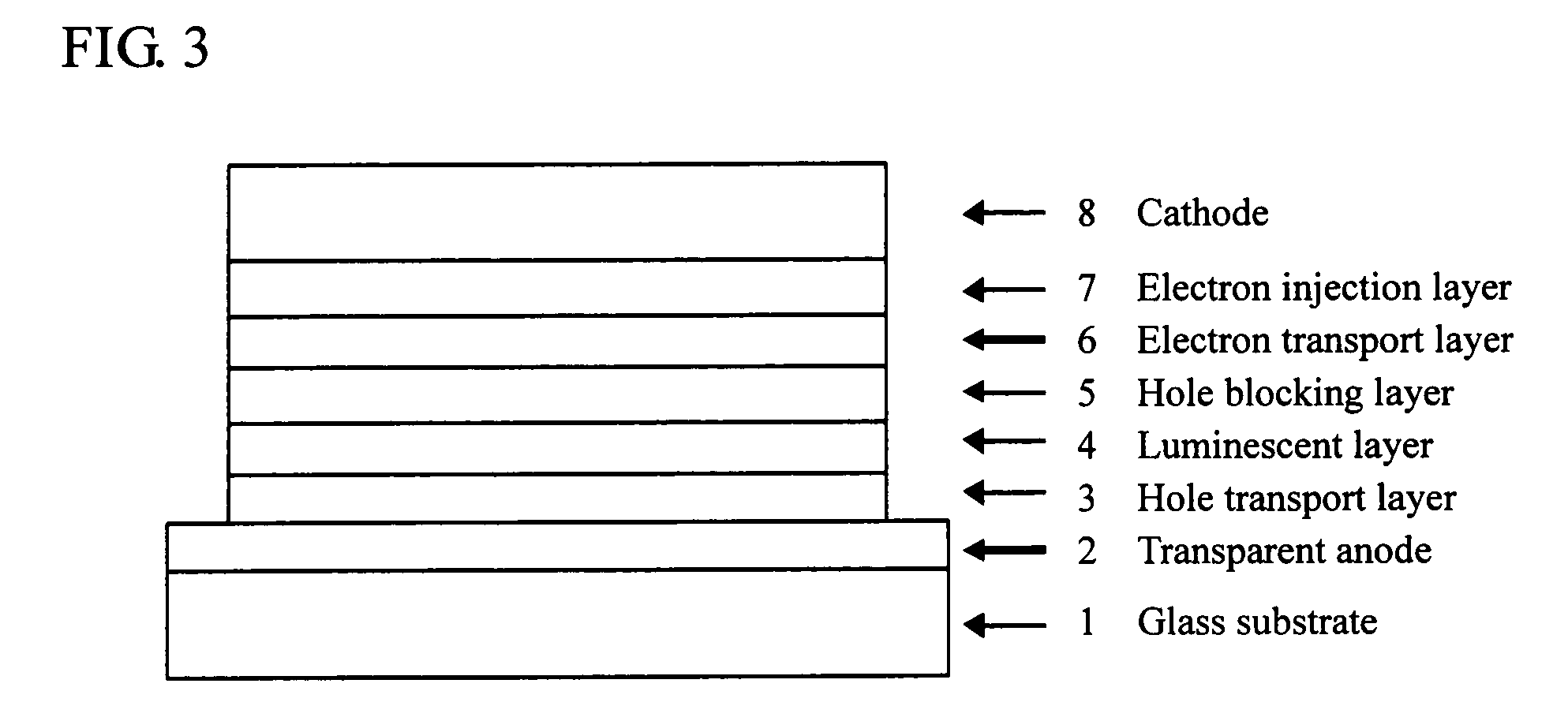Compound having benzotriazole ring structure and organic electroluminescent element
a benzotriazole ring and organic technology, applied in the direction of luminescent compositions, organic chemistry, thermoelectric devices, etc., can solve the problems of reducing efficiency, taz has a great problem of low electron transport property, and cannot be considered that the material has hole-blocking capability, etc., to achieve excellent hole-blocking ability, excellent thermal resistance, and high luminous efficiency and power efficiency.
- Summary
- Abstract
- Description
- Claims
- Application Information
AI Technical Summary
Benefits of technology
Problems solved by technology
Method used
Image
Examples
example 1
Synthesis of 4,6-bis(2,2′-bipyridin-6-yl)-2-phenyl-2H-benzotriazole (Compound 11)
[0056]A reaction vessel substituted with nitrogen was charged with 7.6 g of 4,6-dibromo-2-phenyl-2H-benzotriazole which can be synthesized from 2,4-dibromo-6-phenylazobenzene amine (for example, see Non-Patent Document 5), 13.7 g of bis(pinacolato)diboron, 13.2 g of potassium acetate, 160 ml of dioxane (previously dehydrated with Molecular Sieve 4A) and 1.1 g of PdCl2(dppf)-CH2Cl2, and the resulting mixture was heated and stirred at 80° C. for 72 hours. After cooling to room temperature, the reaction liquid was added to 500 ml of water, followed by stirring for 30 minutes. Precipitates were removed by filtration, and the filtrate was extracted with ethyl acetate. The organic layer was dehydrated with anhydrous magnesium sulfate, and then concentrated, thereby obtaining a crude product. The crude product was purified with column chromatograph (carrier: silica gel, eluent: toluene / ethyl acetate), thereby ...
example 2
Synthesis of 4,6-bis(2,2′-bipyridin-6-yl)-2-(biphenyl-2-yl)-2H-benzotriazole (Compound 20)
[0060]A reaction vessel substituted with nitrogen was charged with 10.9 g of 4,6-dibromo-2-(biphenyl-2-yl)-2H-benzotriazole which can be synthesized from 2,4-dibromo-6-(biphenyl-2-ylazo)benzene amine (for example, see Non-Patent Document 5), 15.5 g of bis(pinacolato)diboron, 15.0 g of potassium acetate, 250 ml of dioxane (previously dehydrated with Molecular Sieve 4A) and 1.3 g of PdCl2(dppf)-CH2Cl2, and the resulting mixture was heated and stirred at 90° C. for 7 hours. After cooling to room temperature, the reaction liquid was added to 500 ml of water, followed by stirring for 30 minutes. Precipitates were removed by filtration, and the filtrate was extracted with chloroform. The organic layer was dehydrated with anhydrous magnesium sulfate, and then concentrated, thereby obtaining a crude product. The crude product was purified with column chromatograph (carrier: silica gel, eluent: hexane / e...
example 3
[0064]Melting points and glass transition points of the compounds of Invention Examples 1 and 2 were measured by a high sensitivity differential scanning calorimeter (DSC6200; a product of Seiko Instruments Inc.).
Melting PointGlass Transition PointCompound of 230° C.78° C.Invention Example 1Compound of 235° C.87° C.Invention Example 2
[0065]The compounds of the present invention show glass transition points higher than 70° C., and thin film state is stable.
PUM
| Property | Measurement | Unit |
|---|---|---|
| voltage | aaaaa | aaaaa |
| luminance | aaaaa | aaaaa |
| work function | aaaaa | aaaaa |
Abstract
Description
Claims
Application Information
 Login to View More
Login to View More - R&D
- Intellectual Property
- Life Sciences
- Materials
- Tech Scout
- Unparalleled Data Quality
- Higher Quality Content
- 60% Fewer Hallucinations
Browse by: Latest US Patents, China's latest patents, Technical Efficacy Thesaurus, Application Domain, Technology Topic, Popular Technical Reports.
© 2025 PatSnap. All rights reserved.Legal|Privacy policy|Modern Slavery Act Transparency Statement|Sitemap|About US| Contact US: help@patsnap.com



